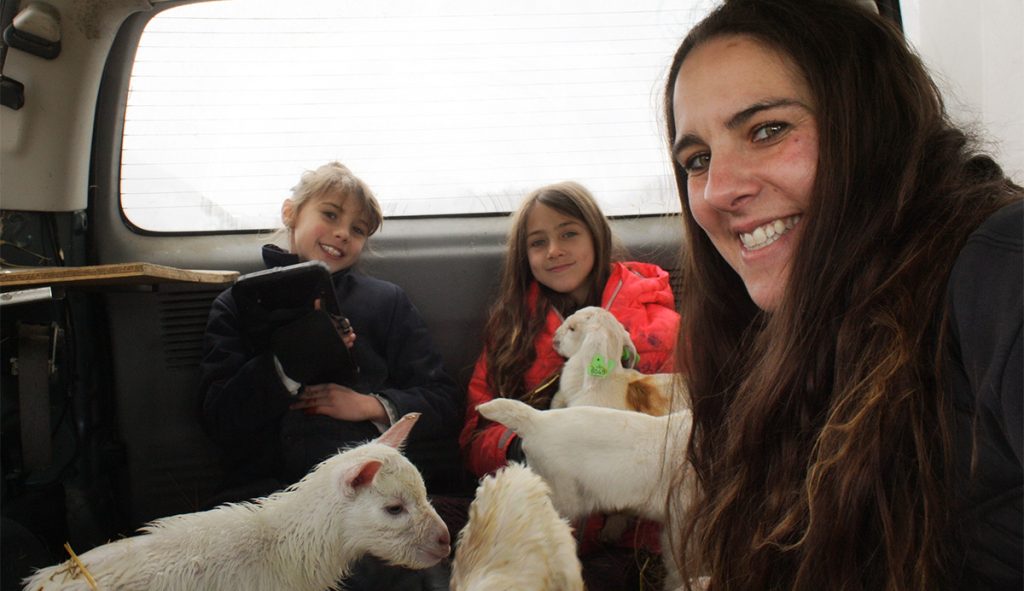Technology adoption on farms is becoming more common. At the same time, AgTech solutions and products are entering the market at an unprecedented rate. In this automation race, it’s crucial to lock the focus on who we, developers and marketers, are really doing this for – our North American farmers.
“Real-world testing provides insights that might get overlooked prior to commercialization. Often, omitting some of these seemingly benign features can spell disaster for the fledgling AgTech company. Because if there is one thing farmers are good at, it’s sniffing out a bad deal, and frankly, once you’ve lost your credibility, it is nearly impossible to get back.” – Darcy Pawlik, Chief Operations Officer at WS.
As an outcome-based marketing agency, we believe in getting to know every aspect of the products and services we help promote, especially the audience’s outlook. We spoke to Jony Roos from Roos Dairy Goats, Ltd. about the role AgTech plays in their daily operations and what the future holds for their farm and agriculture as a whole.

Jony and Jan Roos own and run the Roos Dairy Goats farm near Brownsville, ON. The couple started the farm in 2007 with just 200 goats and grew it into one of Ontario’s largest dairy goat farms. Jony and Jan have four children, aged six to twelve, all deeply invested in farming and actively helping in the operation.
“I don’t think I became a farmer. I was born being one,” said Jony. “I grew up on my parents’ farm in Holland with dairy cows, pigs, and sheep. I vividly remember the smell of fresh-cut hay, the many trips collecting cows out of the grass fields to get milked, raising newborn calves, and driving the tractor – farming life brings so much diversity.”
In 2019, Jony and Jan became Ontario’s Outstanding Young Farmers winners after being nominated for Canada’s Outstanding Young Farmers Program.
Roos Dairy Goats focuses on producing goat milk while growing alfalfa and corn for feed and cash cropping. Jony and Jan currently have over 2,000 milking goats and expected around 2,200 kids by the end of April 2023. They farm on 300 acres of their own land and rent an additional 100 acres each year.
During the goats’ birthing season – also known as kidding season – up to 16 people from the local community work on the farm. Once kidding ends, Jony and Jan have two full-time and several part-time staff.
Jony states that adopting technology on the farm was a necessary part of the expansion. Automating tasks lets the Rooses distribute labour efforts more efficiently, better monitor animal health, keep expenses down, and focus on growing and improving their operation.
“I have a lot of respect for my grandparents, who exclusively used pitchforks and milked cows by hand. We now have machines for that. Of course, there’s still work to be done on the farm, but on a different level,” she added.
This is some of the tech Jony and Jan currently use:
According to Jony, the biggest challenge with implementing AgTech is the cost. Depending on the provider, the annual subscription price for many tools might not always be justified for small and midsize operations in the short term.
While some tools are too expensive, others simply do not exist. “A few years ago, I started looking for a company to help me create a solution that will allow me to implement our app’s data quicker,” said Jony. “I’d approached a few well-known, global companies with my idea and was told the industry isn’t ready for it.”
Data ownership is another concern Jony expressed. She noted that while knowledge is crucial to a successful operation, the farmers must remain in complete control over their farm’s intel without giving operational liberties to third-party processors.

In search of an easier solution for tracking the goats and monitoring their health, Jony and Jan developed the Roos Dairy Goats application with the help of Guido Vandekrol from Innovel Software. “It started with the kid goats. Each employee can log in and input data under their personal user ID, which helps me maintain accountability,” said Jony.
The app tracks young goats via RFID tags and allows the farm employees to record notes on each goat’s health, track feeding patterns, and input any medications given to the animal. After a recent update, the application allows tracking every goat, overseeing each animal’s history over time, and planning accordingly. The same system also tracks the amount of milk collected through the rotary parlour. Analyzing correlations and trends provides valuable decision-making information to keep both the herd and business healthy.
“Another update we did was connecting goat babies to their mothers,” added Jony. “So, after a few years, we see how many kids she had and if they were males or females. I can give mothers with their kids a special check off if they have good genetics, based on birth rates and milk performance.”
The Roos Dairy Goats app is only available to Jony, Jan, and their employees.
When thinking about the future of agriculture, Jony is confident things will continue to get more and more automated. “There’s always room for improvement,” she noted. “I just hope we’ll keep automatization in our human control and not use it as a tool of power-play.”
With the rapid development of automation technology, Jony believes consumers need to know how much work still goes into operations. Although technological advancements significantly optimize farmers’ day-to-day lives, people will continue to play the primary roles in bringing food to fork.
“Food is not just served on your plate every day. There are a lot of steps to get it there,” Jony concluded. “Let’s step it up and ensure a good future for the next generation!”
